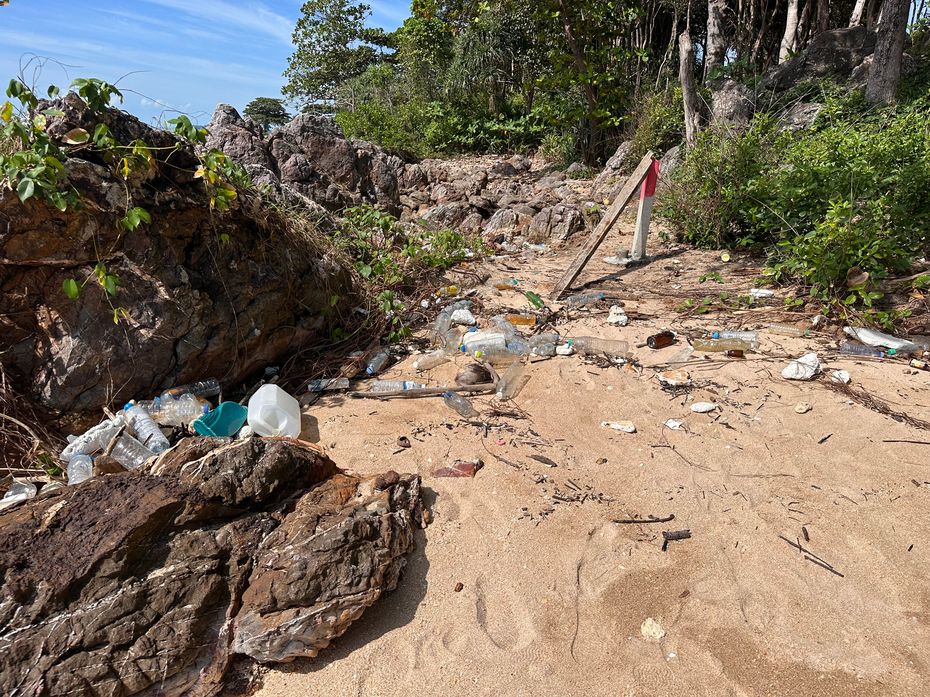The Beauty and the Beast: My Experience at Paradise Beaches
As a traveler, I’ve witnessed the world’s beauty and its scars. Recently, my journey led me to a paradise beach. The golden sand and inviting water captivated me, yet amidst this paradise, I found an alarming amount of trash. Plastic bags, tin cans, and even a lemonade can that had become part of its own ecosystem – a stark reminder of human impact on our planet.

The Sources of Beach Pollution
The rubbish at these beaches doesn’t just appear out of nowhere; it results from local waste, tourists’ careless disposal, and the relentless ocean currents that bring debris from distant shores. While there’s a variety of trash, plastic is the main problem. It’s the most persistent and harmful to our oceans.
A Global Problem: Our Responsibility at Home and Abroad
The problem isn’t just local or limited to our actions as tourists. The choices we make in our home countries significantly impact the global environment. Every piece of plastic we use, from packaging to single-use items, contributes to the overwhelming pollution that eventually finds its way to our oceans and beaches. We must recognize our collective responsibility that transcends borders.

A Brief History of Plastic
Humans have been using plastic since the mid-19th century. Alexander Parkes invented the first synthetic plastic, Parkesine, in 1862 as an alternative to ivory. In 1907, Leo Baekeland developed Bakelite, marking the start of the modern plastics industry. The 1930s and 1940s saw the creation of polyethylene and nylon, with plastics playing a crucial role in World War II. Post-war, plastics became ubiquitous in consumer goods. The 1950s and 1960s introduced polypropylene and polystyrene, further increasing plastic’s use in packaging. Since the 1970s, growing concerns about plastic pollution have led to recycling initiatives and the development of biodegradable plastics.

The Illusion of Clean Beaches
We must understand that if we only see clean beaches, it’s because people actively maintain them. Without regular cleanups and preventive measures, all beaches would be covered in rubbish. The oceans harbor plastic we’ve used for decades, and it’s a crisis we must stop. The plastic doesn’t magically disappear; it breaks down into microplastics that harm marine life and enter our food chain.

Taking Action: What We Can Do
As travelers, we must minimize our impact. We can support eco-friendly initiatives, participate in beach cleanups, and advocate for sustainable practices. But our responsibility doesn’t end there. We must reduce our plastic consumption, support recycling programs, and educate others about the importance of preserving our planet’s beauty. Together, we can make a difference.
Before you go…
If you’re vegan or just looking for cruelty-free supplements, chocolate, or meal kits, here are a few brands worth checking out.
Dr. Vegan make fully plant-based supplements with clear ingredients. Use code DR15 to get 15% off.
The links above are affiliate links. If you click through and buy something, I may earn a small commission at no extra cost to you.

